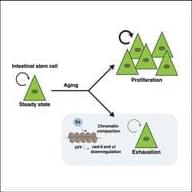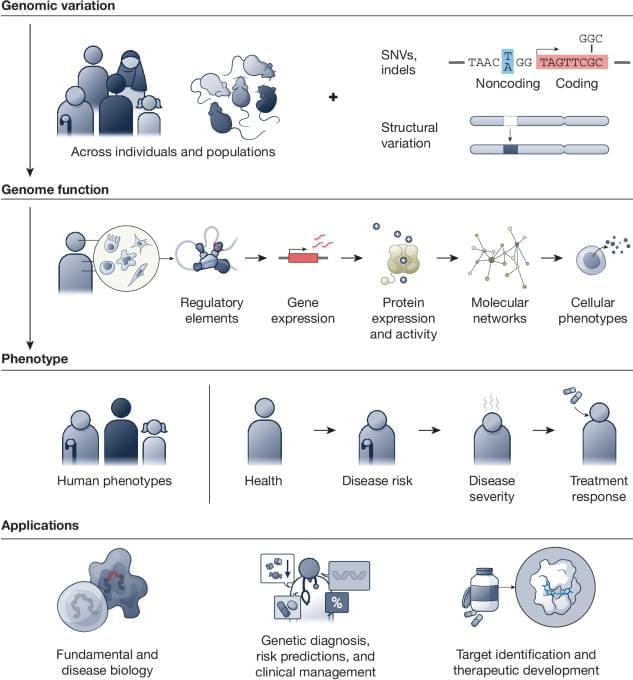Molecular biology; Cell biology; Omics; Transcriptomics.
Atoms on the edge
Posted in particle physics, quantum physics
Typically, electrons are free agents that can move through most metals in any direction. When they encounter an obstacle, the charged particles experience friction and scatter randomly like colliding billiard balls.
But in certain exotic materials, electrons can appear to flow with single-minded purpose. In these materials, electrons may become locked to the material’s edge and flow in one direction, like ants marching single-file along a blanket’s boundary. In this rare “edge state,” electrons can flow without friction, gliding effortlessly around obstacles as they stick to their perimeter-focused flow. Unlike in a superconductor, where all electrons in a material flow without resistance, the current carried by edge modes occurs only at a material’s boundary.
Now MIT physicists have directly observed edge states in a cloud of ultracold atoms. For the first time, the team has captured images of atoms flowing along a boundary without resistance, even as obstacles are placed in their path. The results, which appear in Nature Physics (“Observation of chiral edge transport in a rapidly rotating quantum gas”), could help physicists manipulate electrons to flow without friction in materials that could enable super-efficient, lossless transmission of energy and data.
Discovering Earth’s third global energy Field. 🌀
A NASA-led rocket team has finally discovered the long-sought electric field driving particles from Earth’s atmosphere into space ‼️
First hypothesized over 60 years ago, it is “an agent of chaos” whose impacts are still not fully known: go.nasa.gov/3XcDDLD
In hospital operating rooms and intensive care units, propofol is a drug of choice, widely used to sedate patients for their comfort or render them fully unconscious for invasive…
Propofol works quickly and is tolerated well by most patients when administered by an anesthesiologist.
But what’s happening inside the brain when patients are put under and what does this reveal about consciousness itself?
Investigators at Michigan Medicine, who are studying the nature of consciousness, have successfully used the drug to identify the intricate brain geometry behind the unconscious state, offering an unprecedented look at brain structures that have traditionally been difficult to study.
Researchers have discovered that T cells in the body can be reprogrammed to slow down and even reverse aging. Using a mouse model, scientists found T cells can be used to fight off another type of cell that contributes to the aging process.
Learn maths and science on Brilliant! If you use my link, the first 30 days are free, plus you get 20% off the annual premium subscription ➜ https://brilliant.org/sabine.
I got a bunch of requests to comment on a new attempt at a theory of everything that supposedly combines quantum physics with general relativity. I had a look, and this is a quick comment. First reaction, basically. Didn’t get far in the paper, as you will see. I am sorry in case I appear unkind, but this kind of stuff really pisses me off.
The paper is here: https://www.sciencedirect.com/science…
🤓 Check out my new quiz app ➜ http://quizwithit.com/
A brief explanation of how superfluid dark matter can combine fluid dark matter and modified gravity.
For galaxy clusters and for the cosmic microwave background, dark matter matter is the better explanation. But to explain galactic rotation curves and other properties of galaxies, modified gravity is the better explanation.
Until now, physicists have taken an either-or approach. In this video I argue that the answer may be a combination of both. This idea may be realized through dark matter which forms a superfluid. In this case dark matter has two phases, a normally fluid phase and a superfluid phase. In the latter phase, it has no internal friction and appears like modified gravity.
Taken together, so I argue, this explains the existing data best.
The Impact of Genomic Variation on Function Consortium is combining single-cell mapping, genomic perturbations and predictive modelling to investigate relationships between human genomic variation, genome function and phenotypes and will provide an open resource to the community.
While it has been suggested that low-energy experiments might allow to find evidence for quantization of gravity, direct detection of single gravitons has normally been considered a hopeless task. Here, the authors suggest that a massive body cooled to the ground state in a gravitational wave background should display detectable stimulated single gravitonions.









